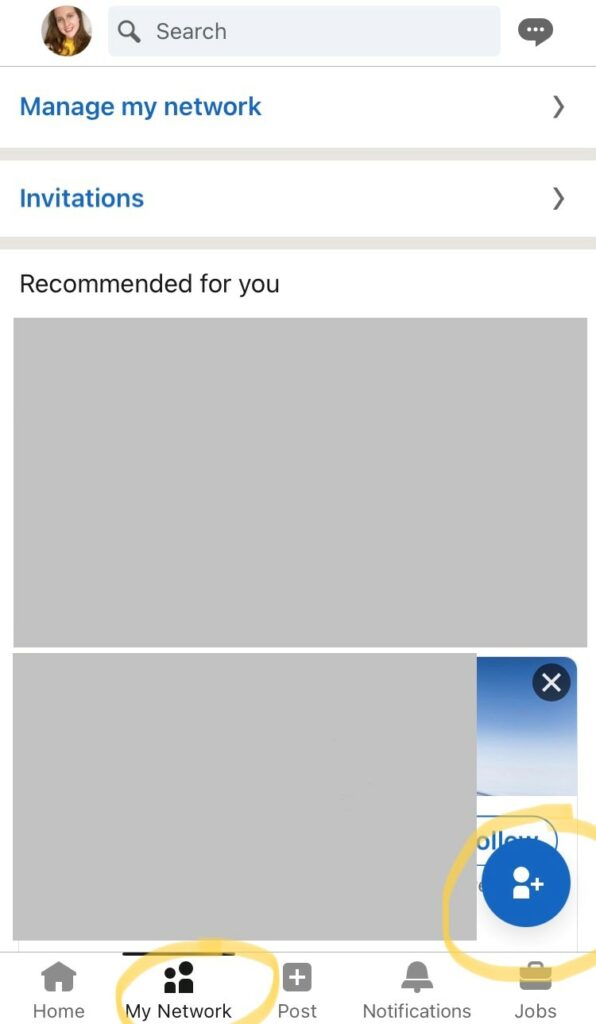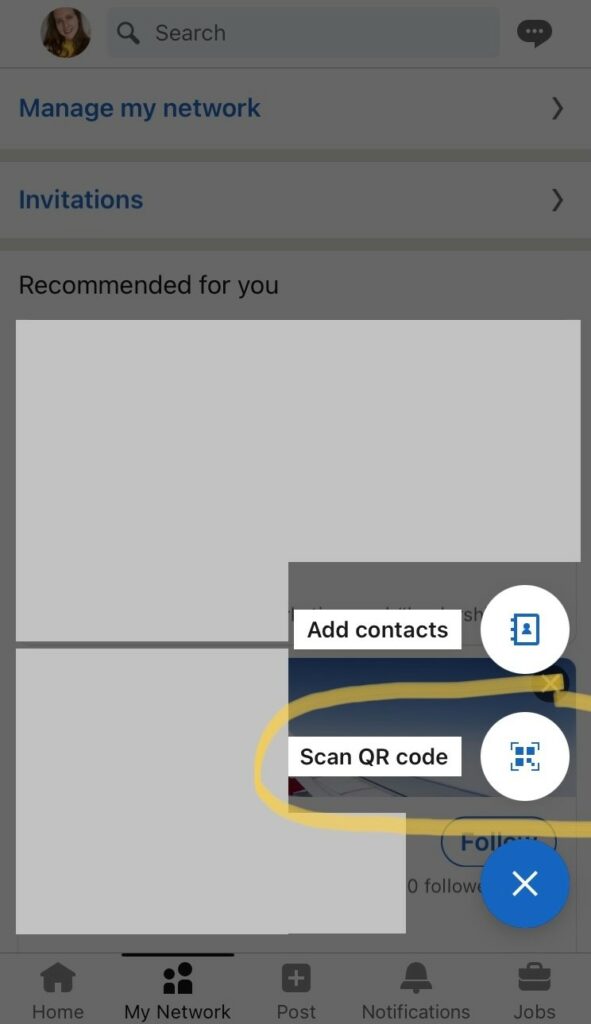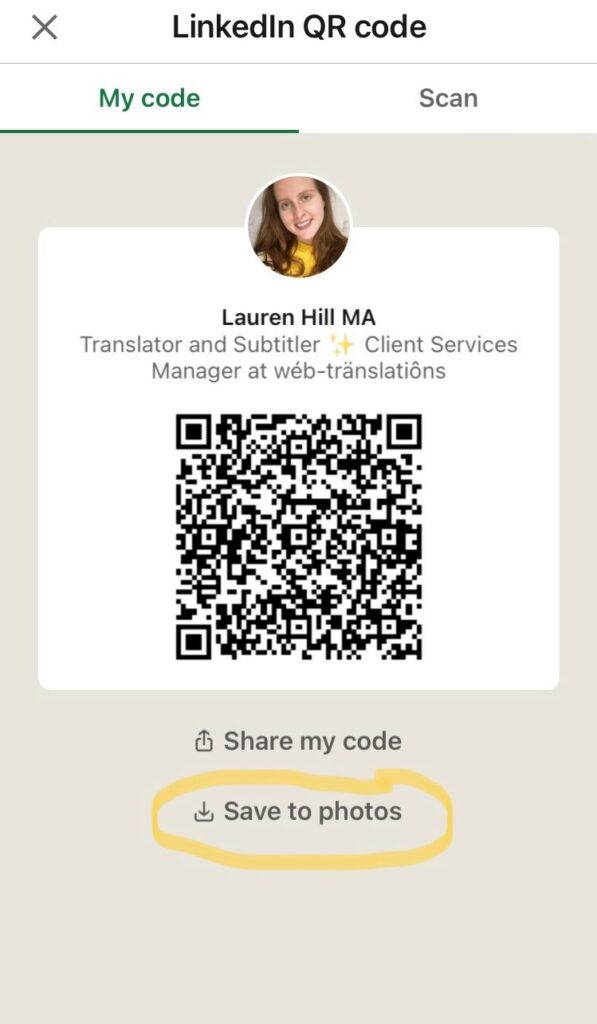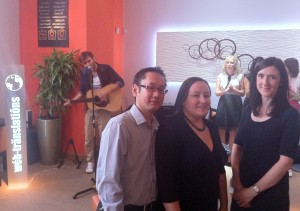Networking Best Practices Part III: Follow-Up
This is the third and final part to our three part blog series all about networking! If you missed the first two blogs, they were all about preparing for the big day and what to do on the day itself. You can check these out here for part one and here for part two.
Today’s blog is about following up. It’s not just the communication on the day that’s important. You also need to follow-up with potential leads in the days following the event.
Networking: Results are in the follow-up
It’s not what happens at the event that leads to sales, it’s the follow-up! Here are some tips for following up effectively:
- Connect on LinkedIn (if you haven’t already). LinkedIn is a great platform for networking professionally. By connecting with them, it means that you can get in touch with people easily. But it also allows them to see who you are and what the business is about.
- Personalise your follow-up. Don’t just send a generic message to everyone, it will likely just end up being deleted before it’s even read. Instead make notes on the day about your conversation with each person as you go, so that you can refer to what you’ve discussed and make your follow-up more personal. I find it best to write any notes on the business card itself, so you don’t have loads of pieces of paper.
- Use open-ended questions. Rather than saying ‘If you want more information, just let me know’, maybe say ‘How are you getting on with the development of the educational course that you mentioned? I’d love to hear more’. It demonstrates that you’re customer-focused, but also helps you to stand out from the rest.
- Remember my point in an earlier blog about asking questions to draw out their problems? Well now is certainly the time to use their responses. Explain how you can solve the issues that they’ve mentioned, and offer to have a call with them. During a call, it’s much more difficult to avoid responding, as they can’t dismiss you as easily as they can with an email.
- Continue to check in – it takes time to get results. In sales, you need to chase people around 5 times before you get any reply or result. With networking, it’s exactly the same! As Adam Rifkin said, ‘don’t rush relationships, trust takes time’.
If you don’t have time to check in with people after the event, then it may not be worth going in the first place. Following up shows that you are interested in them, and not just about getting sales on the day.
I hope you’ve found these tips useful. Keep an eye on our LinkedIn page and our blog for more tips like these.
Networking Best Practices Part II: Networking
Welcome back to our three part blog series all about networking! If you missed the first blog, it was all about preparing for the big day. You can check it out here. Today’s blog, however, is about the networking day itself. You may be dreading it, but we hope these tips help to make it a little easier and worthwhile.
Networking: It’s the Big Day!
- Make the most of small talk. Many say that you should avoid small talk whilst networking, but for me, I’d highly recommend it! You can find out a lot from people by just asking questions and it also shows them that you’re human. You may have heard this famous cliché, however it’s very true and I certainly stand by this when I’m networking – people buy from people!
- Similarly, another rule that I like to implement is listen more than you talk. Ask questions to encourage the other person to share more about themselves. This is how you learn the most about them, but also the way you can form a relationship. Try to also avoid talking about just work, after all, they are human!
- Use their first name a couple of times within the conversation. By using their first name within the conversation, not only does it create a sense of familiarity, but it also will help you to recall their name after the event.
- Body language is everything! Ensure you’re focused on them only, that you look interested and that your body language is open. Don’t cross your arms for example, or allow your eyes wander to other stands or conversations.
- Ditch the elevator pitch at exhibition events. Now I know I said you should prepare an elevator pitch, but for events that don’t have dedicated time for this pitch, it will seem a little out of place. So instead, just opt for small talk and asking questions. After all, these people have paid rather a lot of money to be there and display their business, so don’t go up to them and start selling your business to them. Listen to what they have to say and ask the right questions to find if they have any current downfalls that you can help resolve.
- Spot those who are alone. This is a great way to enter into conversation at those less structured events such as talks. It can be very daunting walking into a room where people have already formed groups and are having in-depth conversations about the current economy. So rather than trying to insert yourself into this group, try approaching those who are on the outside. This is how all of those groups started, and I’m sure they’ll be very grateful for the company. Again, one of my best leads was won through this method, as you’re able to form a strong and more personal relationship with them, before others come along.
- Don’t be afraid to wrap up a conversation and move on if it’s not working between you. You are both there for a purpose with limited time and a lot to see. If you’re struggling with sparking the conversation, it’s okay to carry on (but in a polite way of course).
- At events with dedicated elevator slots, be the last to pitch. You may want to just get it over and done with, however it more advantageous to go last. It gives you time to listen to others’ and allows you to refer to them in your pitch where appropriate.
By being human and not a sales-y robot, you’ll make genuine connections with people. Although they may not purchase from you themselves, they may refer you to their connections instead.
We hope you enjoyed this blog, and that networking events seem a little less daunting now. Please do get in touch to let us know how the event goes, we’d love to hear your feedback.
Networking Best Practices Part I: Preparation
Networking is an important and often underestimated aspect of business. Richard Branson, a well-known businessman, once said that ‘succeeding in business is all about making connections’. Social media is a wonderful way to showcase your business, but can it make personal and long-lasting relationships? I’m not so sure it can.
Networking admittedly gets a bad rap. After all, it’s often seen as a room full of pushy salesmen talking about their business and products. But this isn’t the case at all!

Networking is an opportunity to come together with like-minded people who are there to expand their network, and of course, would love sales to be a result of this. The focus however is on gaining connections and consequently expanding your potential audience, as networking is much like a ripple effect. You meet one person, and they have a network of 10 people. These 10 people then know another 10 people and the process continues. Essentially, the more people you connect with, the more connections you can reach.
Although it’s great, we understand that networking may not be everyone’s cup of tea. That’s why Web-Translations has put together a series of blog posts to help guide you through your first networking events. Of course, we should mention that there are many different types of networking events and each one requires a different approach. Nonetheless, our blog posts will primarily refer to intimate and often very structured events, less structured events, such as attending talks and of course exhibitions.
We hope you enjoy this Networking series! Be sure to get in touch via social media to share your thoughts too!
Networking: Preparation is Key
Before attending any event, you may be nervous and dreading the day itself, but by preparing yourself beforehand, you will be well-equipped for the day.
- Prepare your elevator pitch… but don’t recite it like a robot. I find it’s best to make notes of the key points you want to cover, so that you naturally link them all together. Try to address what you do and how it solves problems. And also, if someone’s pitch really interests you or you think they would be a good connection, don’t be afraid to mention this in your pitch. This is most relevant to intimate and structured events, as these have dedicated time slots for each attendant to make their pitch.
- Pack plenty of business cards. This is a crucial part of networking preparation. It’s surprising how many business cards you can hand out without realising at networking events. Pack double what you expect and maybe even a few more. It’s better to have way too many, than having to scribble your details on a rough piece of paper. However, if you do run out, panic not! Use LinkedIn to your advantage – follow the steps below to save your LinkedIn QR code. People will be able to scan your QR code and connect with you on LinkedIn straightaway. Not only does this put you in immediate contact, but it looks professional too!

Firstly, on the LinkedIn mobile app, select ‘My Network’ and then select the circled icon in the bottom right-hand corner.
Next, select ‘Scan QR code’.


And voila! You can now show this for them to scan. However, if you’d like to have the QR code to hand quickly, you can save it by selecting ‘Save to photos’.
- Change your networking mindset. So, this depends on type of event that you’re attending. For those more intimate events, go in with mindset that these people are not your target audience, but are actually your vehicle to gaining leads (remember the ripple effect I mentioned earlier?). For exhibitions, however, go with the mindset that these are potential clients, but not in a pushy way.
- Have a rough plan. This mostly applies to the exhibitions. It’s good to look into who is attending and have an idea about who would like to speak with. However, don’t be afraid to stray from the plan! In fact, it’s often the stands that you least expect, that give you the best results.
The thought of networking may make you anxious and can be very daunting, but with good preparation, you will be well-equipped to tackle the event. I hope you’ve found these tips useful. Keep an eye on our LinkedIn page and our blog for more tips like these.
Friends of Web-Translations – thanks for coming!
We had a great night last Thursday at our first Friends of Web-Translations event, so a big thank you to all those who were able to make it.





